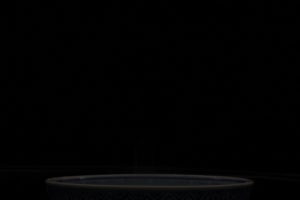A common technique used in high speed photography is to shoot in a dark room with an open shutter and fire a flash at the appropriate time to take the photo. The same technique is well suited to drop photography. Using this method, it is the flash that takes the photo, not the shutter or aperture.
I have found I do not need to be in total darkness and I can get good results as long as the environment is not overly bright. I can then use the aperture to control the ambient light (another standard flash photography technique).
Using a longish exposure (half a second to a second), a small aperture, and flash, the flash is used to illuminate the subject and produce the photo, and the aperture can be used to control the amount of ambient light allowed in to the shot (as well as the depth of field). Reducing the aperture can only go so far though and it is still better to reduce the ambient light as much as you can.
To test your environment, take a photo without the flash. Use manual mode with a shutter speed of half a second or a second. If the image is black you are OK. If it is bright or has too much detail either lower the ambient light or decrease the aperture size. You are looking for a dark photo at around a half to 1 second exposure.
The first photo was taken at F11 and you can still see the edge of the bowl. The second photo was at F16 and is better. You can still see the rim of the bowl if you look close enough though. Both photos were taken in daylight, inside with the lights off, not in darkness.
Depending on your set up, a dark environment can enhance colours and make them appear deeper. Experiment.
As long as you are not in bright light you can remove ambient light by reducing the size of the aperture. This also has the benefit of increasing the depth of field. Caveat: the smaller the aperture the more light you need to take a photo. At F16 four flash guns is fine. Two flashes would probably not be enough.

